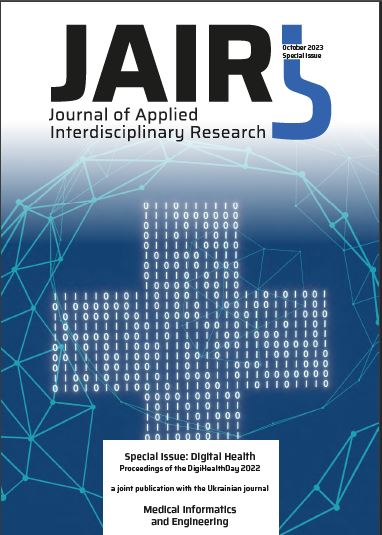Assessment of the Possibility of Implementing the Strategy of Information Integration of Health Care Systems
Main Article Content
Keywords
Medical platforms, continuous professional development (CPD), globalization of education, regional platforms, information technology, integration of healthcare systems, big data, integration, interoperability and discrimination of medical data, flipped learning, online learning
Abstract
This study considers the problems of globalization of medical education and practical health-care in consideration of the wide implementation of information technologies. The creation of unified educational medical systems is hindered by many factors, among which the most important are the lack of standardized technological platforms and educational programs, assessment processes, and
most importantly, data processing methodology. The purpose of the study was to assess the possibility of integrating health-care information at the current stage of information systems development, in order to support future medical education. Conclusions: 1. The creation of a single integrated health-care system on a global scale seems unlikely today. We can only talk about the extent of harmonization of the relevant systems through the interoperability of their data. 2. The constant avalanche-like growth of data dictates the continuous growth of data management problems. At the same time, the right combination of localization, adaptation to cultural diversity and technologies, in the context of sufficient resources and adequate infrastructure in specific countries, is extremely necessary.
References
missing data and inequity. SSM – Population Health. 2022;18:101092. doi: 10.1016/j.ssmph.2022.101092
2. Palvia S, Aeron P, Gupta P, et al. Online Education: Worldwide Status, Challenges, Trends, and Implications, Journal of Global Information Technology Management. 2018;21(4):233–241. doi: 10.1080/1097198X.2018.1542262
3. O’Doherty D, Dromey M, Lougheed J. et al. Barriers and solutions to online learning in medical education – an integrative review. BMC
Medical Education. 2018;18(1):130. doi:10.1186/s12909-018-1240-0
4. Young M, Smith MA. Standards and Evaluation of Healthcare Quality, Safety, and Person Centered Care. Treasure Island (FL): StatPearls Publishing; 2022. Accessed Jun. 10, 2022. https://www.ncbi.nlm.nih.gov/books/NBK576432
5. World Health Organization. Standards for improving quality of maternal and newborn care in health facilities. 2016. Accessed July 10,
2022. https://cdn.who.int/media/docs/defaultsource/mca-documents/qoc/quality-of-care/standards-for-improving-quality-of-maternaland-newborn-care-in-health-facilities.pdf
6. Favaretto M, De Clercq E, Elger BS. Big Data and discrimination: perils, promises and solutions. A systematic review. Journal of Big
Data. 2019; 6:12. doi: 10.1186/s40537-019-0177-4
7. Mintser ОP, Sinienko NO. Data discrimination in pathomorphology. Ways of coping. Medical Informatics and Engineering. 2022. 3(59):18–25. doi: 10.11603/mie.1996-1960.2022.3.13359
8. Rosa M, Faria C, Barbosa AM, Caravau H, Rosa AF, Rocha NP. A Fast Healthcare Interoperability Resources (FHIR) Implementation Integrating Complex Security Mechanisms. Procedia Computer Science. 2019;164:524-531 doi: 10.1016/j.procs.2019.12.215


